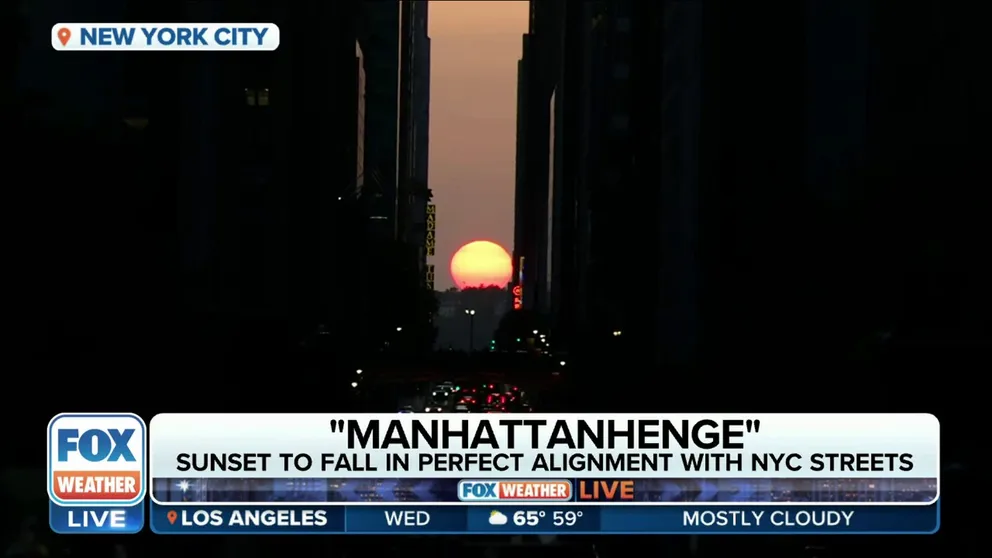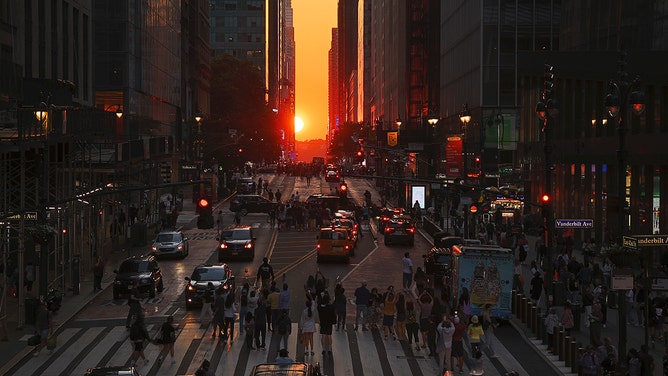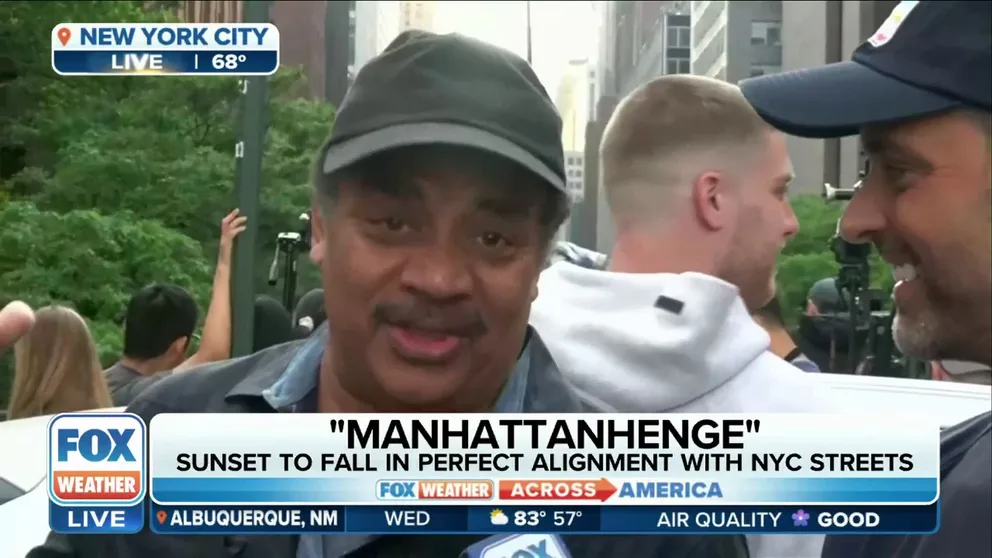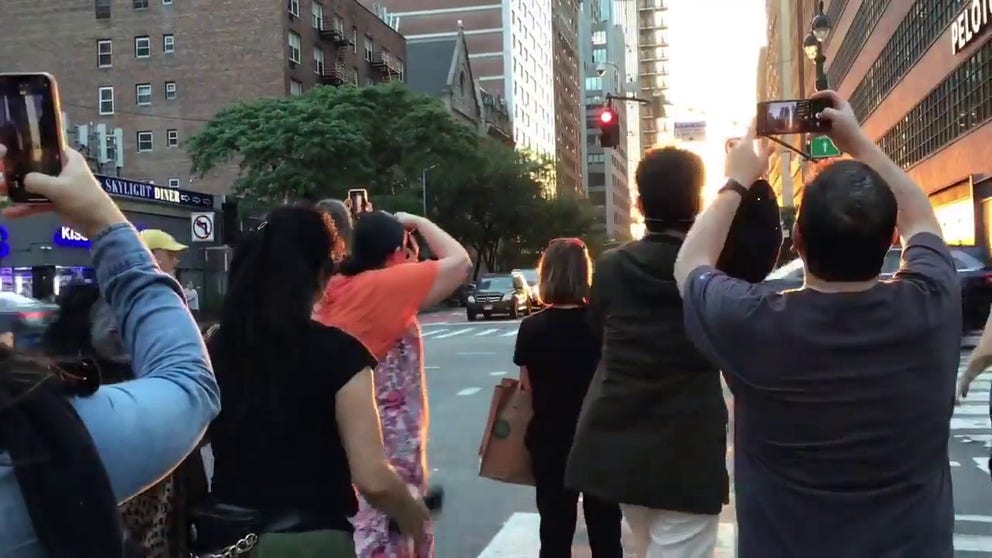'Manhattanhenge' phenomenon lights up New York City in beautiful imagery
"Manhattanhenge" happens when the sun lines up perfectly with the buildings in Manhattan. It provides a cinema-worthy photo opportunity, too.
'Manhattanhenge' delights people in New York City
FOX Weather's Nick Kosir talks to people gathered to capture an image of "Manhattanhenge" as the phenomenon unfolds.
NEW YORK – New York City crowds gathered Tuesday evening to marvel at a famous sunset.
"Manhattanhenge" happens when the sun lines up perfectly with the buildings in Manhattan. It provides a cinema-worthy photo opportunity, too.
Monday night's crowds gathered to see the half sun gathered across the Big Apple to capture the big moment.
WHAT'S MANHATTANHENGE? WHY THOUSANDS GATHER FOR TWICE-ANNUAL CELESTIAL SHOW
Tuesday evening's sunset of the full sun was even better, shortly after 8 p.m., just before the sun sunk into the Hudson River. It was best viewed from the east side and from the widest, cross-town streets.
THESE PHOTOS OF THE SUN WILL PUT YOUR 4K TV TO SHAME
Neil deGrasse Tyson talks about 'Manhattanhenge'
Neil deGrasse Tyson talks to FOX Weather's Nick Kosir about "Manhattanhenge." He coined the term to describe a phenomenon that is now widely anticipated.
The traditional viewing spots are along the city's broad east-west thoroughfares: 14th Street, 23rd Street, 34th Street, 42nd Street and 57th Street.
The farther east you go, the more dramatic the vista as the sun's rays hit building facades on either side. It was also possible to see "Manhattanhenge" across the East River in the Long Island City section of Queens.
The second set of dates for "Manhattanhenge" falls on July 12 (full sun) and July 13 (half sun).
Similar effects occur in other cities with uniform street grids. "Chicagohenge" and "Baltimorehenge" happen when the setting sun lines up with the grid systems in those cities during March and September, around the spring and fall equinoxes. "Torontohenge" occurs around Feb. 16 and Oct. 25.
However, "Manhattanhenge" is particularly striking because of the height of the buildings and the unobstructed path to the Hudson.
THE SCIENCE BEHIND THE SUMMER SOLSTICE
Manhattanhenge stuns crowds in New York City on Memorial Day
Crowds gathered Monday, May 29, to witness the first Manhattanhenge of the year. That's when the sun sets in perfect alignment with Manhattan’s east- and west-numbered streets to create cinema-worthy photo opportunities.
Where does the name "Manhattanhenge" come from?
Astrophysicist Neil deGrasse Tyson coined the term in a 1997 article in the magazine Natural History. Tyson, the director of the Hayden Planetarium at New York's American Museum of Natural History, has said that he was inspired by a visit to Stonehenge as a teenager.
Tyson, the host of TV shows such as PBS' "Nova ScienceNow," was part of an expedition led by Gerald Hawkins, the scientist who first theorized that Stonehenge's mysterious megaliths were an ancient astronomical observatory.
It struck Tyson, a native New Yorker, that the setting sun framed by Manhattan's high-rises could be compared to the sun's rays striking the center of the Stonehenge circle on the solstice.
Unlike the Neolithic Stonehenge builders, the planners who laid out Manhattan did not mean to channel the sun. It just worked out that way.
FOX 5 in New York contributed to this report.







